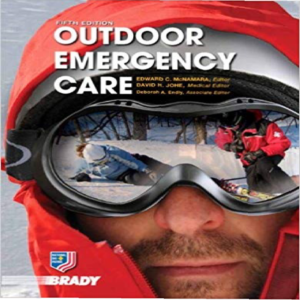Overview
1. When assessing a patient with a possible stroke, the priority of care is:
a. identifying risk factors for stroke.
b. determining if there is a family history of stroke.
c. recognizing the signs of a stroke.
d. determining the type of stroke.
Answer: c
Objective: 11-7
Reference: 375
2. Which of the following is the best answer to the question, “Are all stroke patients paralyzed on one side of their body?”
a. “Yes. Both the arm and leg on the same side will always be paralyzed.”
b. “No. Some patients suffering a stroke will show no signs of paralysis at all.”
c. “No. Paralysis can occur on both sides of the body and in different limbs.”
d. “No. Some stroke patients may have only slight weakness on one side of their bodies.”
Answer: d
Objective: 11-6
Reference: 375
3. When assessing a patient for abnormal speech, you should:
a. ask the patient stick his tongue straight out.
b. ask the patient to repeat a common phrase.
c. see if one side of the patient’s mouth is drooping.
d. write questions on note cards for the patient to read.
Answer: b
Objective: 11-6
Reference: 375
4. When assessing a patient for a facial droop, you should:
a. palpate the face one side at a time.
b. gently lift and then let go of the skin over the cheeks.
c. ask the patient to show you his teeth or to smile.
d. observe the patient’s ability to turn his head to the right and then to the left.
Answer: c
Objective: 11-5
Reference: 375
5. Which of the following instructions to a possible stroke patient describes the proper procedure for assessing an arm drift?
a. “Hold your arms up over your head for 20 seconds.”
b. “Grab my fingers with both hands and squeeze as hard as you can.”
c. “Raise your hands above your head and close your eyes.”
d. “Hold your arms straight out for 10 to 15 seconds.”
Answer: d
Objective: 11-5
Reference: 374
6. Which of the following questions is critical for establishing a window of treatment for a patient who is weak and dizzy and may have suffered a stroke?
a. “Does your father have a history of heart problems or stroke?”
b. “What time did the weakness and dizziness start?”
c. “What medications do you take?”
d. “Do you have any pain in your arms or legs?”
Answer: b
Objective: 11-5
Reference: 373, 376
7. Which of the following pieces of information is assessed by the Cincinnati Prehospital Stroke Scale?
a. Blood glucose level
b. Presence or absence of facial droop
c. Duration of symptoms
d. Age of the patient
Answer: b
Objective: 11-5
Reference: 376
8. You have assessed a patient and found a patent airway, adequate breathing, and a strong radial pulse. The patient is having no difficulty speaking and no facial droop, but exhibits a slight left arm drift. You should interpret these findings as:
a. not suggestive of a stroke.
b. suggestive of a stroke only if the patient’s blood pressure is also elevated.
c. suggestive of a stroke only if the patient’s pupils are not equal.
d. suggestive that a stroke may be occurring.
Answer: d
Objective: 11-5
Reference: 375
9. Which of the following statements shows that the speaker has an accurate understanding of assessment findings related to stroke?
a. “For a stroke to be suspected, both arms must be equally weak.”
b. “If one arm is weak, a stroke should be suspected.”
c. “A stroke should be suspected only when one arm is paralyzed, not just weak.”
d. “If one arm is weak, stroke should be suspected only if the patient’s blood pressure is also elevated.”
Answer: b
Objective: 11-5
Reference: 374, 375
10. You have been called for a 63-year-old woman with slurred speech and right arm weakness. On arrival, the patient informs you that the slurred speech and weakness have resolved. Since your assessment reveals no deficits, you would tell the patient:
a. “It would be best to start taking one baby aspirin every day; this will decrease the chance of this happening again.”
b. “Sometimes seizures present this way; call your doctor in the morning to schedule an appointment.”
c. “If this happens again, wait 10 minutes to see if you are okay. If the symptoms don’t go away, call 911.”
d. “You really need to be evaluated in the hospital. You could be at risk for a future stroke.”
Answer: d
Objective: 11-5
Reference: 375, 380





Reviews
There are no reviews yet.